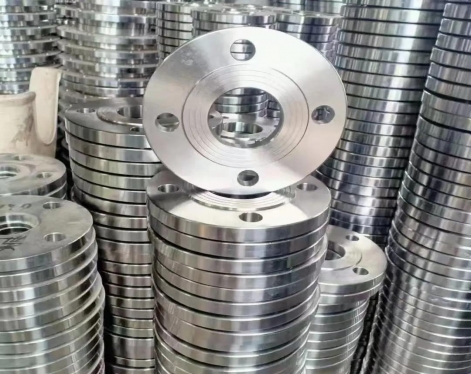Steel yield strength is the yield limit of metallic materials when yielding occurs, that is the stress that resists a small amount of plastic deformation. For metal materials without obvious yield phenomena, the stress value that produces 0.2% residual deformation is specified as its yield limit, which is called the conditional yield limit or yield strength.The external force greater than the yield strength will make the parts permanently fail and cannot be recovered. For example, the yield limit of low-carbon steel is 207MPa. When an external force greater than this limit is applied, the part will undergo permanent deformation. If it is less than this, the part will return to its original state.
External factors affecting yield strength
The external factors affecting the yield strength are: temperature, strain rate, and stress state. As the temperature decreases and the strain rate increases, the yield strength of the material increases, especially body-centered cubic metals are particularly sensitive to temperature and strain rate, which leads to low temperature embrittlement of steel. The influence of the stress state is also important. Although the yield strength is an essential index reflecting the inherent performance of the material, the yield strength value is different depending on the stress state. The yield strength of the material we usually refer to generally refers to the yield strength when unidirectionally stretched.
Testing and inspection methods:
1. Tensile test
Tensile test is to make a sample of 304 stainless steel tube, pull the sample to break on a tensile tester, and then measure one or several mechanical properties, usually only the tensile strength, yield strength, elongation after break rate and section shrinkage. Tensile test is a basic mechanical property test method for metal materials. Almost all metal materials have a tensile test as long as they have requirements on mechanical properties. Especially for materials whose shape is not convenient for hardness testing, tensile testing is one of the means of testing mechanical properties.
2. Hardness test
Hardness test is to slowly press a hard indenter with a hardness tester into the surface of the sample according to the specified conditions, and then test the depth or size of the indentation to determine the hardness of the material. Hardness test is a simple, rapid and easy to implement method in the mechanical property test of materials. The hardness test is non-destructive, and there is an approximate conversion relationship between the material hardness value and the tensile strength value. The hardness value of the material can be converted into a tensile strength value, which has great practical significance.
External factors affecting yield strength
The external factors affecting the yield strength are: temperature, strain rate, and stress state. As the temperature decreases and the strain rate increases, the yield strength of the material increases, especially body-centered cubic metals are particularly sensitive to temperature and strain rate, which leads to low temperature embrittlement of steel. The influence of the stress state is also important. Although the yield strength is an essential index reflecting the inherent performance of the material, the yield strength value is different depending on the stress state. The yield strength of the material we usually refer to generally refers to the yield strength when unidirectionally stretched.
Testing and inspection methods:
1. Tensile test
Tensile test is to make a sample of 304 stainless steel tube, pull the sample to break on a tensile tester, and then measure one or several mechanical properties, usually only the tensile strength, yield strength, elongation after break rate and section shrinkage. Tensile test is a basic mechanical property test method for metal materials. Almost all metal materials have a tensile test as long as they have requirements on mechanical properties. Especially for materials whose shape is not convenient for hardness testing, tensile testing is one of the means of testing mechanical properties.
2. Hardness test
Hardness test is to slowly press a hard indenter with a hardness tester into the surface of the sample according to the specified conditions, and then test the depth or size of the indentation to determine the hardness of the material. Hardness test is a simple, rapid and easy to implement method in the mechanical property test of materials. The hardness test is non-destructive, and there is an approximate conversion relationship between the material hardness value and the tensile strength value. The hardness value of the material can be converted into a tensile strength value, which has great practical significance.
Previous: ASTM 53 Schedule 80 Pipe









